-
 Bitcoin
Bitcoin $83,693.4772
-0.71% -
 Ethereum
Ethereum $1,817.7102
-0.37% -
 Tether USDt
Tether USDt $0.9997
-0.02% -
 XRP
XRP $2.1339
2.23% -
 BNB
BNB $596.9757
-0.15% -
 Solana
Solana $121.5593
2.30% -
 USDC
USDC $1.0000
0.00% -
 Dogecoin
Dogecoin $0.1696
1.75% -
 Cardano
Cardano $0.6614
0.39% -
 TRON
TRON $0.2369
-0.88% -
 Chainlink
Chainlink $12.9593
-0.88% -
 UNUS SED LEO
UNUS SED LEO $8.9206
-4.70% -
 Toncoin
Toncoin $3.2958
-6.81% -
 Stellar
Stellar $0.2557
-2.79% -
 Avalanche
Avalanche $18.2747
-1.39% -
 Sui
Sui $2.2549
-0.27% -
 Shiba Inu
Shiba Inu $0.0...01237
-0.27% -
 Hedera
Hedera $0.1629
-1.15% -
 Litecoin
Litecoin $83.9303
-0.91% -
 Polkadot
Polkadot $4.0096
-2.33% -
 MANTRA
MANTRA $6.2434
-1.07% -
 Bitcoin Cash
Bitcoin Cash $303.0473
-1.83% -
 Bitget Token
Bitget Token $4.5115
-1.00% -
 Dai
Dai $1.0001
0.00% -
 Ethena USDe
Ethena USDe $0.9991
-0.05% -
 Pi
Pi $0.6523
18.15% -
 Monero
Monero $217.2879
-0.01% -
 Hyperliquid
Hyperliquid $11.9364
0.75% -
 Uniswap
Uniswap $5.9118
-1.45% -
 OKB
OKB $51.4933
9.41%
How to understand the price trend of tokens in the Trust Wallet?
To analyze token price trends in Trust Wallet, use the app's 24-hour price change indicator and supplement with external tools like CoinGecko for deeper insights.
Apr 02, 2025 at 01:42 pm
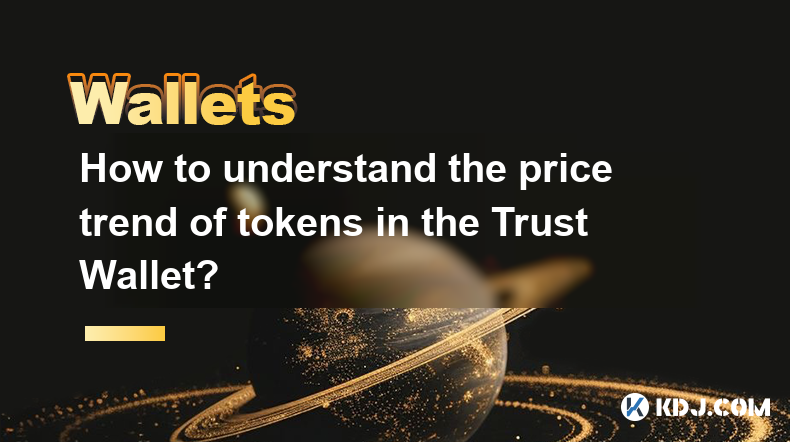
Understanding the price trend of tokens in Trust Wallet involves several key steps and considerations. Trust Wallet, a popular mobile cryptocurrency wallet, allows users to track and manage a wide range of digital assets. To effectively analyze the price trends of tokens within this platform, it's essential to understand the tools and data available, as well as the broader market dynamics that influence these trends.
Accessing Token Price Data in Trust Wallet
Trust Wallet provides a straightforward interface for viewing the current prices of your tokens. To access this data, follow these steps:
- Open the Trust Wallet app on your mobile device.
- Navigate to the "Wallet" tab to see a list of your tokens.
- Tap on any token to view its current price, along with other details such as the token's balance and 24-hour price change.
This immediate access to price data is crucial for understanding the current state of your investments.
Analyzing Short-Term Price Trends
To understand short-term price trends, focus on the 24-hour price change indicator provided by Trust Wallet. This metric shows the percentage change in the token's price over the last day. A positive percentage indicates a price increase, while a negative percentage signifies a decline. For a more detailed analysis, consider the following:
- Check the price chart: While Trust Wallet does not provide detailed charts, you can use external platforms like CoinGecko or CoinMarketCap to view historical price data.
- Monitor trading volume: High trading volume often accompanies significant price movements. You can find this data on external platforms as well.
Understanding Long-Term Price Trends
For long-term price trends, you need to look beyond the immediate data provided by Trust Wallet. Consider these factors:
- Historical data: Use external platforms to analyze the token's price over weeks, months, or even years. This can help you identify patterns and trends.
- Market sentiment: Follow news and social media to gauge the general sentiment around the token. Positive news can drive prices up, while negative news can lead to declines.
- Fundamental analysis: Evaluate the token's underlying project, its team, and its roadmap. Strong fundamentals can support long-term price growth.
Using External Tools for Deeper Insights
While Trust Wallet offers basic price information, external tools can provide more comprehensive insights. Here are some tools you can use:
- CoinGecko: Offers detailed price charts, trading volume, and market cap data.
- CoinMarketCap: Provides similar data to CoinGecko, along with news and social media sentiment analysis.
- TradingView: Useful for technical analysis, offering advanced charting tools and indicators.
These platforms can help you build a more complete picture of a token's price trend.
Factors Influencing Token Price Trends
Several factors can influence the price trends of tokens in Trust Wallet. Understanding these can help you make more informed decisions:
- Supply and demand: The basic economic principle of supply and demand plays a significant role. If demand for a token increases while supply remains constant, the price will likely rise.
- Market sentiment: Public perception and sentiment can drive price movements. Positive news or endorsements can lead to price surges, while negative news can cause declines.
- Regulatory news: Changes in regulations can impact the entire cryptocurrency market, affecting individual token prices.
- Technological developments: Updates or advancements in a token's underlying technology can influence its price. For example, a successful network upgrade can boost investor confidence.
Monitoring Token Price Trends Regularly
Regular monitoring is key to understanding and reacting to price trends. Here are some tips for effective monitoring:
- Set up price alerts: Use external platforms to set up alerts for significant price changes. This can help you stay informed without constantly checking prices.
- Review your portfolio regularly: Take time each week or month to review your token holdings and their price trends. This can help you make timely adjustments to your investment strategy.
- Stay informed: Keep up with news and developments related to your tokens. This can provide context for price movements and help you anticipate future trends.
Using Technical Analysis for Price Predictions
Technical analysis can be a valuable tool for predicting future price trends. While Trust Wallet does not offer these tools directly, you can use external platforms to apply technical analysis to your tokens. Key concepts include:
- Support and resistance levels: These are price levels where a token tends to find support (price stops falling) or resistance (price stops rising).
- Moving averages: These can help smooth out price data to identify trends. Common types include the 50-day and 200-day moving averages.
- Indicators: Tools like the Relative Strength Index (RSI) and Moving Average Convergence Divergence (MACD) can provide insights into momentum and potential trend reversals.
Considering Fundamental Analysis
Fundamental analysis involves evaluating the underlying value of a token based on its project's fundamentals. This can help you understand long-term price trends. Key aspects to consider include:
- Project team: A strong, experienced team can increase investor confidence and support long-term growth.
- Roadmap and milestones: A clear roadmap with achievable milestones can indicate a project's potential for success.
- Use case and adoption: Tokens with real-world use cases and growing adoption are more likely to see sustained price growth.
- Partnerships and collaborations: Strategic partnerships can enhance a project's credibility and potential for growth.
Risk Management and Price Trends
Understanding price trends is crucial for effective risk management. Here are some strategies to consider:
- Diversification: Spread your investments across different tokens to reduce the impact of price volatility on your portfolio.
- Stop-loss orders: Use external trading platforms to set stop-loss orders, which can help limit potential losses if a token's price drops significantly.
- Position sizing: Allocate only a portion of your portfolio to any single token to manage risk effectively.
The Role of Market Cycles in Price Trends
Cryptocurrency markets often follow cycles of boom and bust. Understanding these cycles can help you anticipate price trends. Key phases include:
- Accumulation: Prices are low, and savvy investors start buying.
- Markup: Prices begin to rise as more investors enter the market.
- Distribution: Prices peak, and early investors start selling.
- Markdown: Prices fall as the market corrects itself.
Recognizing where a token is in its market cycle can help you make more informed investment decisions.
Emotional Discipline and Price Trends
Emotional discipline is crucial when dealing with price trends. Here are some tips to maintain discipline:
- Avoid FOMO (Fear of Missing Out): Don't buy tokens just because their prices are rising rapidly. Make decisions based on research and analysis.
- Stay calm during downturns: Price drops are normal in the crypto market. Avoid panic selling and stick to your long-term strategy.
- Set clear investment goals: Define your investment goals and risk tolerance to guide your decisions and maintain discipline.
The Impact of Tokenomics on Price Trends
Tokenomics, or the economic model of a token, can significantly influence its price trends. Key aspects to consider include:
- Token supply: A fixed or decreasing supply can lead to price increases if demand grows.
- Inflation rate: Tokens with high inflation rates may see their value diluted over time.
- Staking and rewards: Tokens that offer staking rewards can attract more investors, potentially driving up prices.
- Burning mechanisms: Some tokens have mechanisms to burn (remove) tokens from circulation, which can increase scarcity and support price growth.
Using Social Media and Community Insights
Social media and community insights can provide valuable information about price trends. Here's how to leverage these resources:
- Follow official channels: Stay updated with official project announcements and news.
- Engage with communities: Participate in token-specific communities on platforms like Telegram or Discord to gauge sentiment and gather insights.
- Monitor influencers: Follow reputable influencers and analysts who provide insights into token price trends.
The Role of Exchanges in Price Trends
Exchanges play a crucial role in determining token price trends. Consider these factors:
- Listing on major exchanges: Being listed on major exchanges can increase a token's visibility and liquidity, potentially driving up its price.
- Trading pairs: The availability of trading pairs can affect a token's accessibility and price.
- Exchange volume: High trading volume on exchanges can indicate strong interest and influence price trends.
Understanding Token Price Trends in Different Market Conditions
Different market conditions can impact how you interpret price trends. Here are some scenarios to consider:
- Bull markets: In a bull market, prices generally rise, and tokens may experience rapid growth. Be cautious of overvaluation and potential corrections.
- Bear markets: In a bear market, prices tend to fall. Look for undervalued tokens with strong fundamentals that may recover in the long term.
- Sideways markets: In a sideways market, prices move within a range. This can be an opportunity to accumulate tokens at stable prices.
The Importance of Continuous Learning
The cryptocurrency market is constantly evolving, and staying informed is crucial for understanding price trends. Here are some ways to keep learning:
- Read industry reports: Stay updated with reports from reputable sources like CoinDesk or CryptoSlate.
- Attend webinars and conferences: Participate in events to learn from experts and network with other investors.
- Join online courses: Enroll in courses on platforms like Coursera or Udemy to deepen your understanding of cryptocurrency markets.
Common Questions Related to Understanding Token Price Trends in Trust Wallet
Q: How can I access real-time price data for tokens in Trust Wallet?
A: To access real-time price data, open the Trust Wallet app, navigate to the "Wallet" tab, and tap on any token to view its current price and 24-hour price change.
Q: What external tools can I use to analyze token price trends?
A: You can use platforms like CoinGecko, CoinMarketCap, and TradingView to access detailed price charts, trading volume, and technical analysis tools.
Q: How does market sentiment affect token price trends?
A: Market sentiment can drive price movements. Positive news or endorsements can lead to price surges, while negative news can cause declines. Monitoring social media and news can help you gauge sentiment.
Q: What role does tokenomics play in price trends?
A: Tokenomics, including factors like token supply, inflation rate, staking rewards, and burning mechanisms, can significantly influence a token's price trends by affecting its scarcity and attractiveness to investors.
Q: How can I manage risk when dealing with token price trends?
A: Effective risk management strategies include diversification, setting stop-loss orders, and careful position sizing. These can help mitigate the impact of price volatility on your portfolio.
Q: How do market cycles impact token price trends?
A: Market cycles, including phases like accumulation, markup, distribution, and markdown, can help you anticipate price trends. Recognizing where a token is in its market cycle can inform your investment decisions.
Q: What is the importance of emotional discipline in understanding price trends?
A: Emotional discipline is crucial to avoid making impulsive decisions based on FOMO or panic selling during downturns. Setting clear investment goals and sticking to a long-term strategy can help maintain discipline.
Q: How can social media and community insights help with understanding price trends?
A: Following official channels, engaging with token-specific communities, and monitoring influencers can provide valuable insights into market sentiment and potential price trends.
Q: How do exchanges influence token price trends?
A: Exchanges impact price trends through factors like listing on major platforms, availability of trading pairs, and trading volume. Being listed on major exchanges can increase a token's visibility and liquidity.
Q: How should I approach token price trends in different market conditions?
A: In bull markets, be cautious of overvaluation; in bear markets, look for undervalued tokens with strong fundamentals; and in sideways markets, consider accumulating tokens at stable prices.
Disclaimer:info@kdj.com
The information provided is not trading advice. kdj.com does not assume any responsibility for any investments made based on the information provided in this article. Cryptocurrencies are highly volatile and it is highly recommended that you invest with caution after thorough research!
If you believe that the content used on this website infringes your copyright, please contact us immediately (info@kdj.com) and we will delete it promptly.
- A prominent crypto analyst, known as Cheds, has issued a warning about Dogecoin's (DOGE) potential decline amid the ongoing market correction.
- 2025-04-05 17:20:12
- Remittix (RTX) Token Presale Raises Over $14.2M Ahead of Its Launch
- 2025-04-05 17:20:12
- Usual Labs Launches a Significant Bug Bounty Program with a $16 Million Prize Pool
- 2025-04-05 17:15:12
- Bandai Namco Amusement Europe Expands its Business Development and Sales Capabilities with the Appointment of Anna Gavrylova
- 2025-04-05 17:15:12
- Qubetics, Binance Coin (BNB), and Bitcoin (BTC) Are 3 Cryptos to Buy the Dip
- 2025-04-05 17:10:12
- Solana (SOL) Price Prediction: Targeting $220 By April 10th, 2024
- 2025-04-05 17:10:12
Related knowledge

How do I contact Rabby Wallet support?
Apr 04,2025 at 08:42am
Introduction to Rabby Wallet SupportIf you are a user of Rabby Wallet and need assistance, knowing how to contact their support team is crucial. Rabby Wallet offers various methods to reach out for help, ensuring that users can get the support they need efficiently. This article will guide you through the different ways to contact Rabby Wallet support, ...
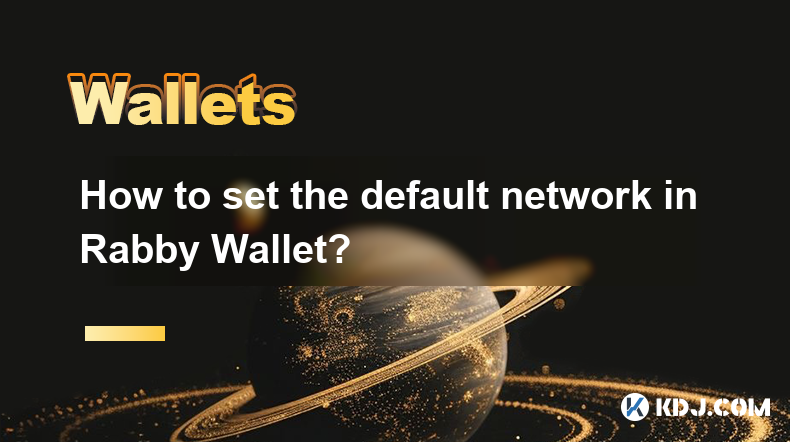
How to set the default network in Rabby Wallet?
Apr 04,2025 at 06:35am
Setting the default network in Rabby Wallet is a crucial step for users who frequently interact with different blockchain networks. This guide will walk you through the process of setting your preferred network as the default, ensuring a seamless experience when managing your cryptocurrencies. Whether you're using Ethereum, Binance Smart Chain, or any o...
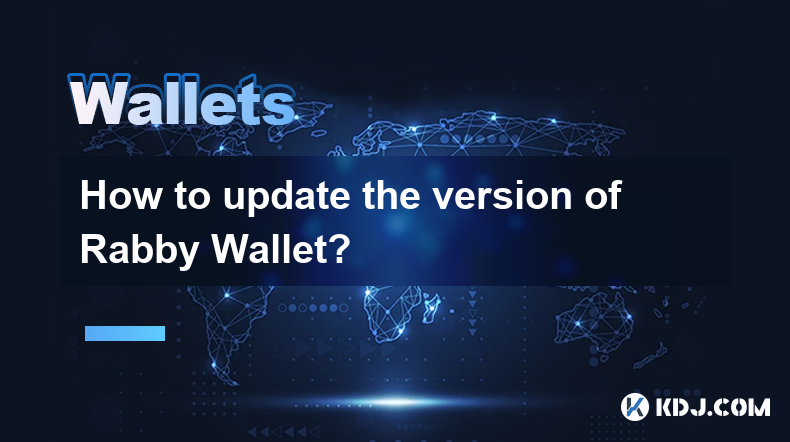
How to update the version of Rabby Wallet?
Apr 05,2025 at 02:14am
Updating the version of Rabby Wallet is an essential task to ensure you have the latest features, security enhancements, and bug fixes. This guide will walk you through the process of updating Rabby Wallet on different platforms, including desktop and mobile devices. Let's dive into the detailed steps for each platform. Updating Rabby Wallet on DesktopU...
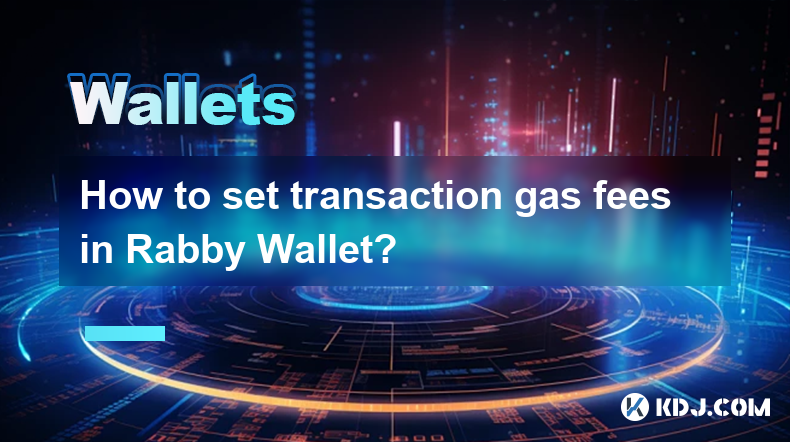
How to set transaction gas fees in Rabby Wallet?
Apr 05,2025 at 02:29pm
How to set transaction gas fees in Rabby Wallet?Rabby Wallet is a versatile tool for managing cryptocurrency transactions, offering users the flexibility to customize gas fees according to their preferences. Setting the right transaction gas fees is crucial for ensuring your transactions are processed efficiently and economically. This guide will walk y...
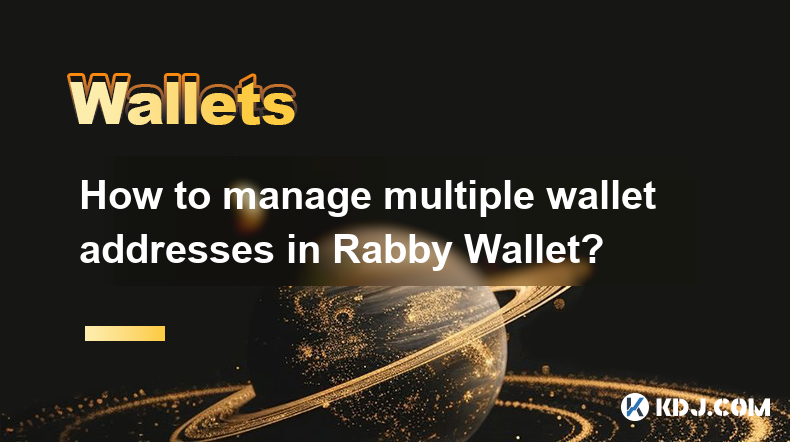
How to manage multiple wallet addresses in Rabby Wallet?
Apr 05,2025 at 07:14am
Managing multiple wallet addresses in Rabby Wallet can significantly enhance your cryptocurrency management experience. Whether you're a seasoned crypto enthusiast or a beginner, understanding how to efficiently handle multiple addresses can streamline your transactions and improve your security. In this article, we will explore the detailed steps and b...
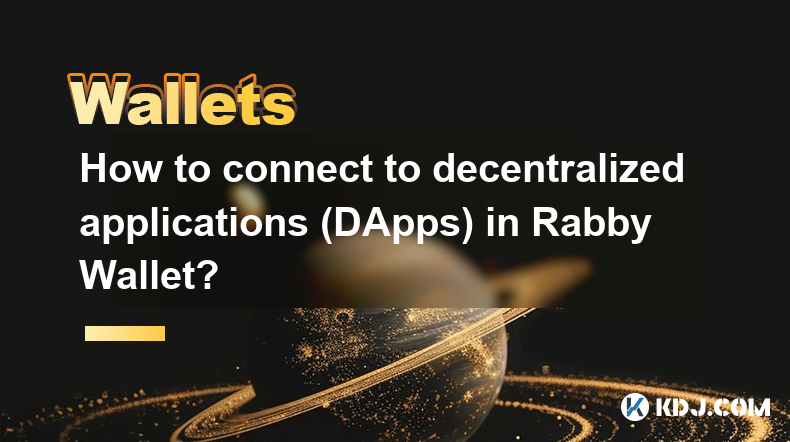
How to connect to decentralized applications (DApps) in Rabby Wallet?
Apr 05,2025 at 01:28am
Connecting to decentralized applications (DApps) using Rabby Wallet is a straightforward process that enhances your interaction with the burgeoning world of blockchain technology. Rabby Wallet, known for its user-friendly interface and robust security features, allows users to seamlessly interact with a variety of DApps across different blockchains. Thi...

How do I contact Rabby Wallet support?
Apr 04,2025 at 08:42am
Introduction to Rabby Wallet SupportIf you are a user of Rabby Wallet and need assistance, knowing how to contact their support team is crucial. Rabby Wallet offers various methods to reach out for help, ensuring that users can get the support they need efficiently. This article will guide you through the different ways to contact Rabby Wallet support, ...

How to set the default network in Rabby Wallet?
Apr 04,2025 at 06:35am
Setting the default network in Rabby Wallet is a crucial step for users who frequently interact with different blockchain networks. This guide will walk you through the process of setting your preferred network as the default, ensuring a seamless experience when managing your cryptocurrencies. Whether you're using Ethereum, Binance Smart Chain, or any o...

How to update the version of Rabby Wallet?
Apr 05,2025 at 02:14am
Updating the version of Rabby Wallet is an essential task to ensure you have the latest features, security enhancements, and bug fixes. This guide will walk you through the process of updating Rabby Wallet on different platforms, including desktop and mobile devices. Let's dive into the detailed steps for each platform. Updating Rabby Wallet on DesktopU...

How to set transaction gas fees in Rabby Wallet?
Apr 05,2025 at 02:29pm
How to set transaction gas fees in Rabby Wallet?Rabby Wallet is a versatile tool for managing cryptocurrency transactions, offering users the flexibility to customize gas fees according to their preferences. Setting the right transaction gas fees is crucial for ensuring your transactions are processed efficiently and economically. This guide will walk y...

How to manage multiple wallet addresses in Rabby Wallet?
Apr 05,2025 at 07:14am
Managing multiple wallet addresses in Rabby Wallet can significantly enhance your cryptocurrency management experience. Whether you're a seasoned crypto enthusiast or a beginner, understanding how to efficiently handle multiple addresses can streamline your transactions and improve your security. In this article, we will explore the detailed steps and b...

How to connect to decentralized applications (DApps) in Rabby Wallet?
Apr 05,2025 at 01:28am
Connecting to decentralized applications (DApps) using Rabby Wallet is a straightforward process that enhances your interaction with the burgeoning world of blockchain technology. Rabby Wallet, known for its user-friendly interface and robust security features, allows users to seamlessly interact with a variety of DApps across different blockchains. Thi...
See all articles




















































































